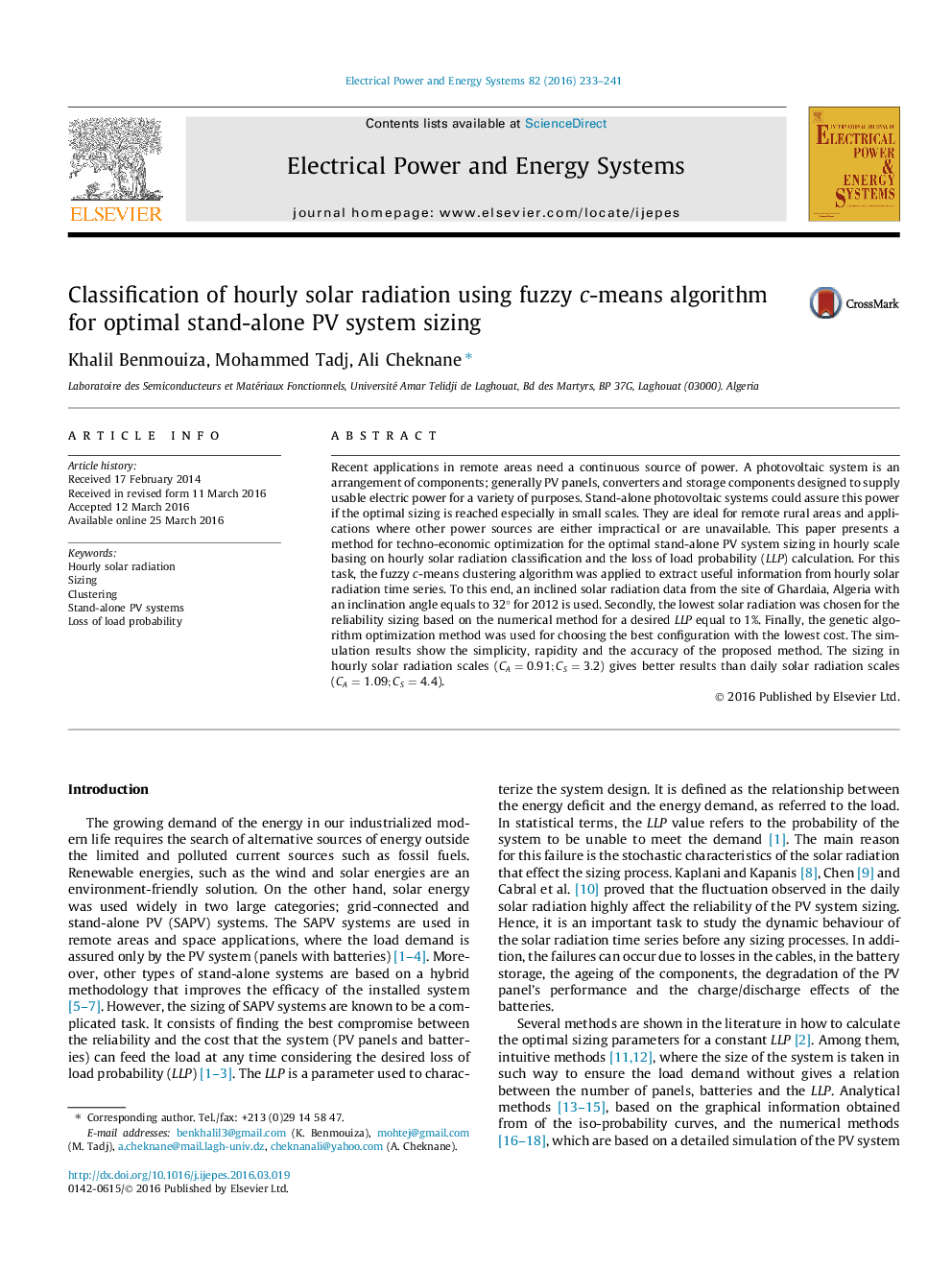| کد مقاله | کد نشریه | سال انتشار | مقاله انگلیسی | نسخه تمام متن |
|---|---|---|---|---|
| 398200 | 1438718 | 2016 | 9 صفحه PDF | دانلود رایگان |
• Fuzzy c-means unsupervised clustering algorithm for the hourly solar radiation classification.
• Sizing of stand-alone PV systems in hourly scale for a desired loss of the load probability equals to 1%.
• A reliability sizing method based on a technical optimization was applied.
• Application of the genetic algorithm method for the economic optimization.
Recent applications in remote areas need a continuous source of power. A photovoltaic system is an arrangement of components; generally PV panels, converters and storage components designed to supply usable electric power for a variety of purposes. Stand-alone photovoltaic systems could assure this power if the optimal sizing is reached especially in small scales. They are ideal for remote rural areas and applications where other power sources are either impractical or are unavailable. This paper presents a method for techno-economic optimization for the optimal stand-alone PV system sizing in hourly scale basing on hourly solar radiation classification and the loss of load probability (LLP) calculation. For this task, the fuzzy c-means clustering algorithm was applied to extract useful information from hourly solar radiation time series. To this end, an inclined solar radiation data from the site of Ghardaia, Algeria with an inclination angle equals to 32° for 2012 is used. Secondly, the lowest solar radiation was chosen for the reliability sizing based on the numerical method for a desired LLP equal to 1%. Finally, the genetic algorithm optimization method was used for choosing the best configuration with the lowest cost. The simulation results show the simplicity, rapidity and the accuracy of the proposed method. The sizing in hourly solar radiation scales (CA=0.91;CS=3.2CA=0.91;CS=3.2) gives better results than daily solar radiation scales (CA=1.09;CS=4.4CA=1.09;CS=4.4).
Journal: International Journal of Electrical Power & Energy Systems - Volume 82, November 2016, Pages 233–241
